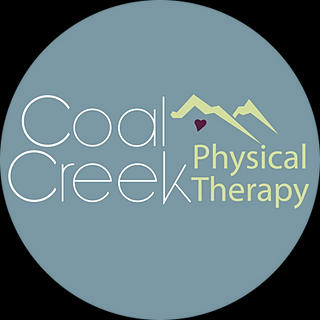Understanding Common Running Injuries
- Coal Creek PT
- Aug 21, 2018
- 3 min read
There are many common injuries that can arise from running - check out the causes, prevention adn treatment plans below

Plantar fasciitis
Causes: Rapid increase in intensity or uphill running/walking followed by sleeping on your stomach or tightly tucked sheets. Without proper stretching, this causes shortening of the calves, Achilles tendon, and plantar fascia due to the feet resting in a “toe-pointed” position.
Prevention: Ease into mileage and intensity by increasing volume first according to the 10% rule each week. Then, slowly incorporate speed and hill training on days of shorter mileage. Also, make sure to have supportive shoes with good arch support that prevents to much collapse (or “over pronation”) in the foot.
Treatment: Icing and rest, Stretching, hip and gluteal strengthening, a night splint are just a few.
Patellar tendonitis
Causes: Rapid increase in intensity/volume of running, tight quadriceps and hip flexors, downhill running, and over striding
Prevention: Again, ease into mileage and intensity by increasing volume first according to the 10% rule each week. Then, slowly incorporate speed and hill training on days of shorter mileage. A gait analysis performed by a physical therapist or other specialist will help you understand what your appropriate stride-length may be. Lastly, make sure to properly stretch or foam roll after exercise to prevent tightening of the muscles the remainder of the day
Treatment: Icing and rest, Stretching, hip and gluteal strengthening, cho-pat strap or other brace is helpful while the pain is moderate-severe and you are unable to rest.
Iliotibial band syndrome
Causes: Similar to patellar tendonitis in that a rapid increase in activity (volume or intensity), tightness of the quadriceps and hip flexors, downhill running, and over striding can lead to iliotibial band syndrome
Prevention: Same as patellar tendonitis
Treatment: You guessed it, same as patellar tendonitis
Hamstring strains
Causes: Over striding, performing intense workouts on sore or fatigued hamstrings, hill training on too steep of an incline (>10%).
Prevention: Obtain a gait analysis by a physical therapist or other specialist in order to fix over striding. If you are engaging in a lot of strength training or track workouts, make sure to ice your hamstrings afterwards to reduce possible inflammation. In addition, your strength training should focus on the hips and gluteals with the importance of engaging these muscles in functional positions with good stability and core activation.
Treatment: Ice and rest, massage, strengthening glutes/hips, gait training
Shin splints
Causes: Overly rigid shoes or running on surfaces that are too hard/firm, running inclines (>10%), increasing training load too quickly over short duration, or having flat arches
Prevention: Once again, find a training program that works for your body and experience level. Try not to increase training load by more than 10% each week in both intensity and duration. Lastly, make sure to have good footwear that supports your arches while providing sufficient cushion for your gait.
Treatment: Ice and rest, proper stretching of calves and quadriceps, strengthening of shin muscles and ankles to support heel strike upon landing, gait training.
Achilles tendonitis
Causes: Similar to Plantar Fasciitis - Increase in hill training or overall training intensity/load, improper calf stretching, new shoes that are too rigid, sleeping with feet in “toe-pointed” position
Prevention: Similar to Plantar Fasciitis – make sure to follow the 10% rule of increasing exercise intensity/load, proper stretching of calves/plantar fascia after exercise
Treatment: Ice and rest, stretching of heel cords and calves, eccentric loading, orthotics, massage, gait training
Sacroiliac joint and Groin Pain
Causes: Increase in training intensity/load, weak core strength, tightness of gluteal and hip musculature, leg length discrepancy
Prevention: Build volume before intensity according to the 10% rule, try not to go over 300-400 miles on the same shoes, core stabilization training, proper stretching of gluteals and low back, learning proper lifting mechanics
Treatment: ice and rest, stretching of gluteals and hip flexors, strengthening for hips/glutes/core, gait analysis, obtaining the proper footwear with good arch support
If you have questions about running, want your gait checked, and/or any other health concerns - please give us a call or shoot us an email! 303 666 4151 or coalcreekpt@gmail.com









Comments